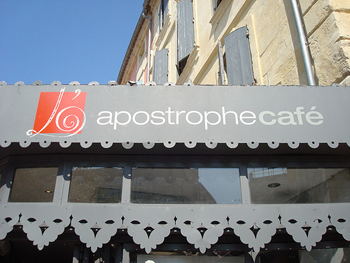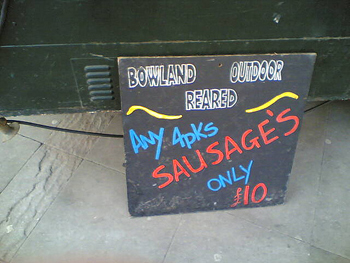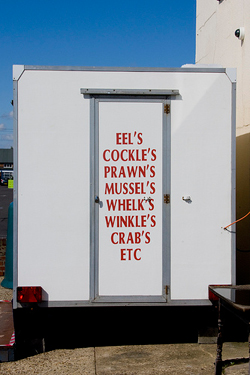
Source: L’apostrophe Café, Stadtkatze, Flickr
Apostrophes are punctuation marks that are slightly elevated above the line of text. Put another way, they are commas on a higher plane. While more popular than they should be, apostrophes have a number of legitimate uses in our language. Watch the following video about “How to Use Apostrophes.” As you watch the video, you will notice that British English rules tell you that you can eliminate the extra s after the apostrophe if your name ends in s. In American English, we like to keep the s after the apostrophe if there is a name ending in s. See the example of Ted Williams below.
Apostrophes are for abbreviation.
As you learned, apostrophes are used for abbreviation. When you sandwich two words together, you form a contraction. Some common contractions are I’m, isn’t, and doesn’t. In each of these contractions, the apostrophe takes the place of the missing letter — the “a” in I’m and the “o” in isn’t and doesn’t. In native Texan dialect, the apostrophe takes the place of “o” and “u” in y’all.
Apostrophes can also be used to indicate when a speaker drops an ending, such as goin’ for “going” or fixin’ for “fixing.” When writing informally or when writing dialogue, you might write, “Bill’s goin’.” When writing more formally, you might write, “Bill is going.”
Apostrophes are for ownership.
The other use of apostrophes in English grammar is to show ownership. We use an apostrophe after the name of the owner, followed by the letter “s,” to indicate that something belongs to that individual.
- Mickey Mantle’s uniform
- Joe DiMaggio’s baseball
- Ted Williams’s bat
When more than one person owns something, the apostrophe follows the “s.”
- New York Yankees’ reputation
- Chicago Cubs’ ballpark
- Minnesota Twins’ merchandise
Apostrophes are not necessary, however, when you already have a possessive pronoun, such as ours, theirs, or whose.
Apostrophes are not for plurals.

Source: Farmer's apostrophe?, hugovk, Flickr
One of the most common mistakes in punctuation is adding an apostrophe to form a plural. If your food truck has “Dog’s on Wheel’s” painted boldly on its side, you won’t sell any hot dogs to English majors. Another place that people sprinkle apostrophes zealously is after last names. To form the plural of a last name, just add an “s” (“es” if your name ends in an s or z sound, as in Perez). For plurals, no apostrophe is needed. The Norwegians we all know as “the Johnsons” don’t need an apostrophe unless you are referring to something they own or something that’s associated with them, such as their family reunion. Then you need an “s’” to indicate possession.
All Norwegians are invited to the Johnsons’ family reunion. Bring your own lutefisk.

Source: Apostrophe crime at Walton-on-the-Naze,
Anne Roberts, Flickr
Despite persistent reminders from English teachers, students still mix up it’s with its and you’re with your.
- It’s is the contraction for “it is.”
- Its is a possessive pronoun showing ownership.
- You’re is the contraction for “you are.”
- Your is a possessive pronoun.
The only good thing about this fishmonger’s sign is that it’s (it is) on the back of his delivery truck. Had he proofread the sign maker’s draft, he’d have deleted all of the apostrophes.
Some words in the sentences below have unnecessary apostrophes. Other words need apostrophes because they’re contractions, singular possessives (’s), or plural possessives (s’). Read each sentence and choose the correct punctuation using the drop-down menu.

Now you can use it’s and its and their and they’re with confidence. You might even use an exclamation mark to show how expert you are with apostrophes!